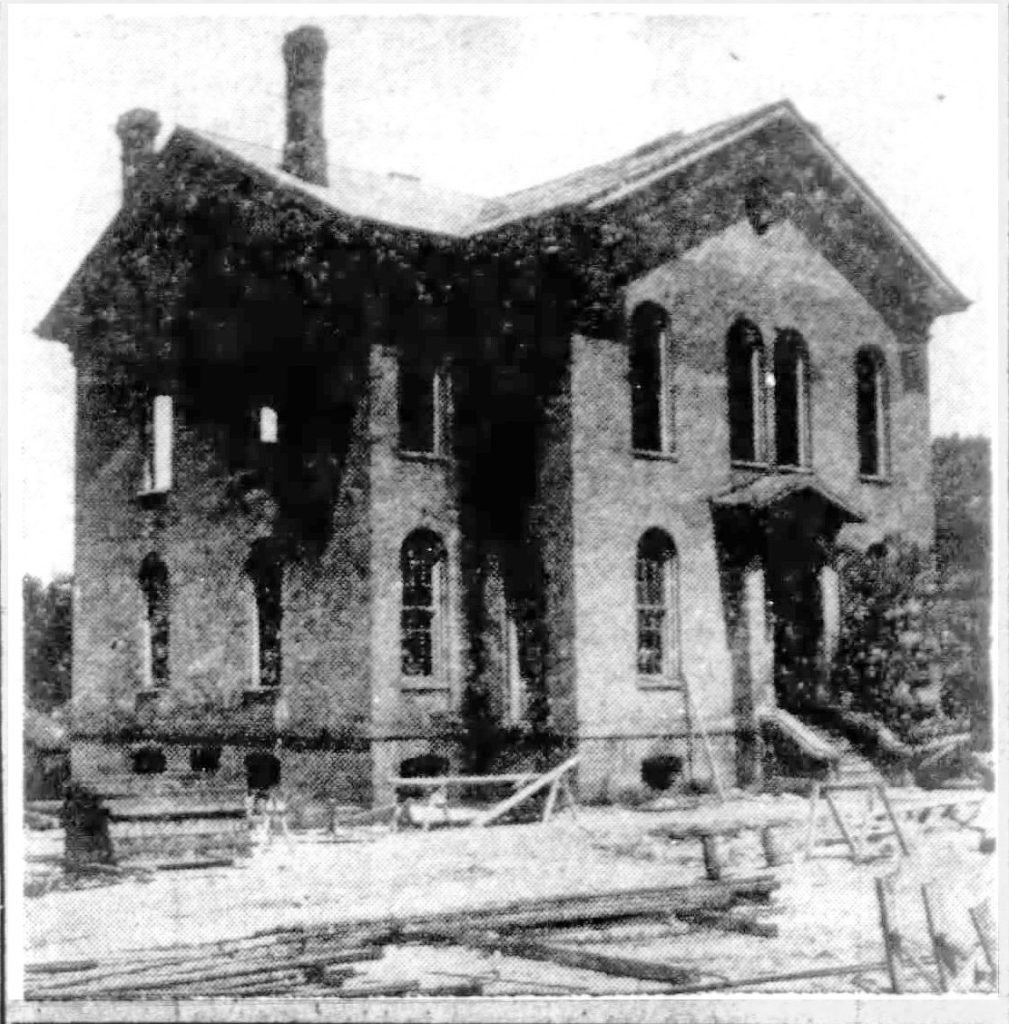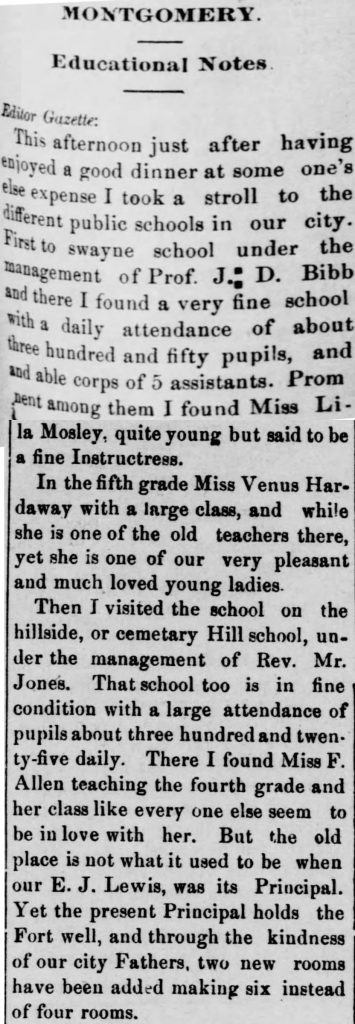
Montgomery, Alabama • Sun, Jun 27, 1948Page 13

In 1918 and 1919 thirty-seven young women, friends and neighbors of my grandmother Fannie Mae Turner were members and guests of the Edelweiss Club in Montgomery, Alabama. These are snapshots from their lives, place and times.
Click on any image to enlarge!
I did not realize that the Freedmen’s Bureau founded many schools. In this article from the Britannica I found: “Its greatest accomplishments were in education: more than 1,000 Black schools were built and over $400,000 spent to establish teacher-training institutions. Among the historically Black colleges and universities that received aid from the bureau were Atlanta University (1865; now Clark Atlanta University) and Fisk University (1866; originally the Fisk School), named for Gen. Clinton B. Fisk of the Tennessee Freedmen’s Bureau, who gave the school its original facilities in a former Union army barracks. Howard University, founded in 1867 through an act by the U.S. Congress, was named for Maj. Gen. Howard.”
Swayne College in Montgomery was one of those schools.

SWAYNE COLLEGE
Named for Union General and Freedmen’s Bureau Agent Wager Swayne, Swayne College was dedicated 21 April 1869. The Bureau appropriated $10,000 for the building and the local black community purchased 3.5. acres for the site. Future officeholder Elijah Cook submitted the winning location of Union and Grove Streets. The building stood three stories high and was constructed by Henry Duncan with ventilation by Isaac Frazier. George Stanley Pope became the first principal of the school with occupancy in October 1868, and Fisk alumnus Charles Duncan became the first black principal. The American Missionary Association operated the school, and its high standards mirrored the influence of the local Congregationalist church. Swayne contained desks, blackboards, maps, and an organ costing $200. With tuition free to local students, it offered coursework in the alphabet, reading and spelling, advanced reading, arithmetic, geography, and writing. Closing in 1937, Swayne College paved the way for black education in Montgomery and was succeeded by Booker T. Washington School.
Alabamama Historical Association
The school had no lights, stove heat and two outhouses in the back. The Congregational church is right up the street at the top of the map. That was my grandparent’s church.

Saturday, Mar 29, 1890, Huntsville, AL Vol: XI, Issue: 18, Page: 3
MONTGOMERY
Educational Notes
Dear Gazette;
This afternoon just after having enjoyed a good dinner at some one else’s expense, I took a stroll to the different public schools in our city.
First to Swayne school under the management of Prof. J. D. Bibb and there I found a very fine school with a daily attendance of about three hundred and fifty pupils, and an able corps of 5 assistants. Prominent among them I found Miss Lila Mosley, quite young but said to be a fine Instructress.
In the fifth grade Miss Venus Hardaway with a large class, and while she is one of the old teachers there, yet she is one of our very pleasant and much loved young ladies.
Then I visited the school on the hillside, or Cemetery Hill school, under the management of Rev. Mr. Jones. That school too is in fine condition with a large attendance of pupils about three hundred and twenty-five daily. There I found Miss F. Allen teaching the fourth grade and her class like everyone else seem to be in love with her. But the old place is not what it used to be when our E. J. Lewis, was its Principal. Yet the present Principal holds the Fort well, and through the kindness of our city Fathers, two new rooms have been added making six instead of four rooms.
Venus Hardaway is the mother of Edelweiss member Gwendolyn Lewis Graham and taught before and after her husband’s death.

It sounds as though the ratio of teachers to students meant there were very large classes
Yes there were. And there were not many rooms either. Because there were so many students who were unable to attend becuse there wasn’t room for them, every time another building was finished or another room added, it was still overcrowded.
Another remarkable story. I had no idea the Freemen’s Bureau built schools — yet another important social mission that was lost when the Union troops pulled out of the south.
I didn’t either. This article https://www.britannica.com/topic/Freedmens-Bureau says over 1,000 schools were established. I think I’ll add this to the post.
It’s wonderful that the teachers were so loved.
Especially by the young reporter. Hopefully the students and community also felt that way.
Loved the newspaper clippings. It feels like newspaper, back then, were very much involved with the population and even te individuals of their community. Doesn’t seem the same now.
No it doesn’t. I guess that’s the way they got more people to read their paper too, talking about what’s going on, who did what etc.